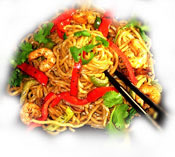
After 1959, Tibet began an epoch-making era reform. This was conducted by the central government of China pushing a primitive society of serfdom into the modern society of civilization.
In the countryside serfdom was abolished, rent and interest rates were reduced and farm-land was assigned to the landless serfs and slaves. In the pastoral areas after the reforms, the broad masses of herdspeople possessed their own tools, livestock and homes. Having cast off the heavy burdens of corvee, taxes and exploitation by moneylenders charging high interest rates, enthusiasm for production rose to an unprecedented high. In 1960, the total grain output of the Tibet Autonomous Region had risen 12.6 percent from 1959, while the amount of livestock rose by 31 percent. The Tibetan people had begun to possess the right to live comfortably, with enough to eat and to wear.
The Democratic Reforms of 1959 put an end to the political system of combining religious and political rule by introducing the new political system of people's democracy. In September 1959, the founding of the Tibet Autonomous Region was proclaimed, the first Tibetan People's Congress was held in Lhasa and the Tibetan people began to exercise their rights to vote and to stand for election. Tibet practices regional national autonomy in accordance with the policies of the central government, which allows the Tibetan people to enjoy a high degree of autonomy and some special preferential treatment. Thus Tibet enjoys advantages over the interior in many aspects including the treatment of ethnic groups, religion, economic and social development and in the day-to-day life of the people.
At present, many Tibetans have become top leaders in both government and party organizations at all levels in the Tibet Autonomous Region, such as the five chairmen of the government of the Autonomous Region: Ngapoi Ngawang Jigme, Tian Bao, Dorji Tshitan, Dorje Cering and Gyalncain Norbu. Some of them also hold important posts in the central government. The Standing Committee of the National People's Congress which is similar to the national parliament of western countries, has always had a post of Vice-chairman reserved for Tibet. This is an unwritten convention. This title was even reserved for the 14th Dalai Lama during the first few years of his exile in India.
Nowadays the emancipated serfs have enough to eat and wear. When they catch up with the pace of China's reforms and opening up to the outside world they will be drawing near to prosperity. By 1993, the income per capita in Tibet Autonomous Region reached 1,660 yuan RMB, although in the countryside it was only 515 yuan RMB Amduo County in northern Tibet, which is famous for its animal husbandry has a regional income per capita of 1,338 yuan RMB, which is much higher than the national average in rural areas. Savings deposited in both urban and rural areas of the Tibet Autonomous Region reached 1.05 billion yuan RMB by August 1994, 4,400 times as much as was deposited in 1952. Modern electrical appliances, such as colour televisions, refrigerators, tape recorders and telephones are now popular in Tibet. The diet of the Tibetan people has become much richer, with fresh meat, eggs and vegetables appearing frequently. Traditional Tibetan clothing has become even more beautiful with people wearing Tibetan robes made from sheepskin otterfur rings and bracelets made from agate and hats decorated with gold and silver thread for their everyday clothing.
Today's Tibet is to some extent a typical dual-structure community. The ancient mysterious Potala Palace contrasts greatly with Lhasa's Holiday Inn Lido, where credit cards are used. Under the socialist system. Tibetan Buddhism has shaken off the influence of the “dark Ages”. It was not suffocated by the democratic reform and industrialization programme, rather, it is now rejected by law. Particularly after China's reform and peeing up to the outside world, religion in Tibet has been granted a new lease of life. The Central Government has spent US $ 240 million renovating temples so be whole region now has 1,425 temples and religious laces for her 34,000 monks and nuns to engage in religious activities and the key religious festivals of the major religious sects have also been resumed. The Jokhang Temple and the Samve Temple both of which have long histories, have been completely renovated. In 1994 the Central Government provided a large amount of capital including gold, silver and other precious stones to help renovate the Potala Palace, which is now open to both monks and lay people. Religious personnel from Tibet enjoy wide respect in China, and many of them have been elected to the National People's Congress and the Chinese People's Political Consultative Conference at various levels go participate in the administration and discussion of state affairs. Religious groups have Conducted academic exchanges both inside and outside China, with the help of the government.








 PREVIOUS
PREVIOUS